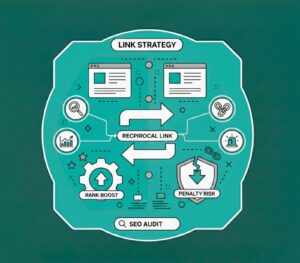Pillar Pages: The Secret to Skyrocketing Your SEO Rankings in 2025
Blogs | Category
Written By: Lauren Davison
Introduction
Search is changing fast. Many sites fight for the top spot. But only a few win. Why? They have strong content and smart layouts. One new trend is pillar pages for SEO rankings. These pages act like the main road on your site. They guide people. They help Google understand your topics fast.
Are you ready to make your site shine? Do you want a clear way to beat the crowd? Stay here. You will learn how pillar pages build structure, boost traffic, and help you grow.
Table of Contents
What Are Pillar Pages and Why Do They Matter for SEO
A pillar page is a long-form, full-coverage guide that links out to many detailed subtopics (cluster pages). It serves as the central hub of your website content architecture, holding together your topic clusters in a neat way.
Imagine you run an e-commerce site. You pick “E-commerce SEO” as your main theme. That becomes your pillar page. From there, you link to pages like “product page SEO”, “technical SEO”, and “mobile SEO”. This is the pillar and cluster model in action.
Why does this model matter for your SEO pillar strategy? Because search engines (and users) like organised content. The pillar page shows you know the topic in breadth, the cluster pages show you’re deep. With good internal linking for SEO, your site becomes easier to navigate and stronger in search.
By using pillar pages for SEO rankings, you create a clear map of your content. You avoid random blog posts floating without connection. You build content silos. You show topical authority. You help visitors and Google both.
The Evolution of SEO and the Rise of Topic Clusters
From Keyword Stuffing to Topical Authority
In early SEO days, the main tactic was: find a keyword, repeat the keyword, and build many pages. It worked, until it didn’t. Algorithms have matured and become faster. Now they prize pages that answer search intent, connect related ideas, and show real understanding from several angles.
That shift gave rise to topic clusters and the need for a well-defined content structure. Instead of isolated posts each targeting different keywords, we now group them. The main page (pillar) covers the broad topic; the cluster pages cover long-tail keywords and subtopics. You get more depth, more clarity, and less cannibalisation of keywords.
How Pillar Pages Build Relevance and Authority
So how exactly does a pillar page tie into this evolution? Build one, and you create a hub all clusters point to. That’s content hub SEO with teeth. Search engines see a tidy pyramid; some call it a tree of related material. You’re not skimming. You’re teaching.
Link cluster content back to the pillar and loop the pillar to each cluster. That circulates link equity, tightens your internal structure, and gives users a one-stop resource. Result: topical authority, hard-earned and durable.
How Pillar Pages Improve Search Engine Rankings
1. Strengthens Internal Linking Structure
With the pillar and cluster model, you organise everything. The pillar links out to cluster pages; cluster pages link back. Good internal linking for SEO turns lonely pages into a connected web. Crawlers move more easily. People click deeper. Bounce rate drops. Sessions stretch.
2. Enhances Keyword Coverage
Each cluster page can target a long-tail keyword query, niche, specific, and often high-intent. The pillar owns the umbrella term. Together, you blanket the topic. The keyword mapping for pillar pages gets crisp: pillar for the head term, clusters for the spokes. Layered coverage lifts the whole domain.
3. Establishes Topical Authority
Link many in-depth cluster posts back to one pillar, and you prove expertise. Over time, search engines associate your brand with the entire topic space. That’s topical authority at work. Clean website content architecture makes you look and rank as credible.
4. Boosts User Engagement and Session Duration
Clusters point sideways and back to the hub, so a reader rarely stops at one page. Curiosity kicks in. Clicks follow. Dwell time rises. Bounce eases. It’s not a direct ranking factor, but engagement helps the bigger picture.
5. Improves Content Discoverability
Older posts fade, unless the pillar keeps them in circulation. Internal links resurface them, pass value, and keep useful pieces visible. Freshness isn’t only about dates; it’s about findability.
Building an Effective Pillar Page Strategy
Step 1 — Identify Core Topics
Start with 5–10 broad themes that reflect your business. For a digital agency, you might choose SEO, Content Marketing, PPC, and Web Design. Each becomes a pillar. Your SEO pillar strategy begins with that short, sharp list.
Step 2 — Research Topic Clusters and Subtopics
Use tools like Ahrefs and SEMrush to pull the questions people actually ask. Note patterns. Gather problems. Stack long-tail phrases. There’s your topic cluster map. Those cluster pages will anchor under the pillar.
Step 3 — Create In-Depth Pillar Content
Write for breadth and depth. Usually, 2,000–3,000 words fit the job. Define terms. Share best practices. Show examples. Link to your cluster content. Make the pillar the page people bookmark.
Step 4 — Link Strategically Between Pillar and Cluster Pages
This step is core to internal linking for SEO. Every cluster links back to the pillar; the pillar links to every cluster. Use anchors that say what a page is about, no guesswork. That clarity helps both users and crawlers.
Step 5 — Optimise for Search Intent and UX
Know the intent: learn, compare, buy? Shape the layout to match. Use jump links, clear headings, visuals, and a short FAQ. Tight on-page optimisation plus neat content hub SEO equals a pleasant path for readers and for bots.
Advanced SEO Benefits of Pillar Pages
Better Crawl Efficiency and Indexation
Because clusters point to the pillar and the pillar points back, discovery speeds up. Indexation improves. Your content structure acts like a roadmap, and link equity flows through the lanes you built.
Enhanced Featured Snippet Opportunities
Orderly pillars with scannable sections, lists, and definitions tend to win snippets. More structure, more chances. Rich results often follow neat formatting.
Easier Content Maintenance and Updates
When something changes, algorithm notes, pricing, or process, you update the pillar and key clusters. One hub refresh can revive the set. That slows content decay and supports stable rankings over time.
Measuring the Success of Your Pillar Page Strategy
Key Metrics to Track
Keep an eye on:
- Organic traffic growth for the clusters and pillars.
- Keyword ranking improvements (broad and long-tail).
- Click-through rates (CTR) from search.
- Dwell time and bounce rate on pillar and cluster pages.
- Backlink acquisition (especially to the pillar page).
Continuous Optimization
Run a quarterly audit of clusters. Add missing angles. Merge thin posts. Update visuals. Fix gaps in internal links. That upkeep keeps your SEO content hierarchy sharp and working.
Common Mistakes to Avoid
- Creating multiple pillars on the same topic
- Writing thin, shallow “pillars” that lack depth
- Forgetting to link cluster pages both ways
- Ignoring user experience or making navigation confusing
Building Long-Term SEO Success with Pillar Pages
Using pillar pages for SEO rankings is not just a tactic. It’s a content ecosystem strategy. When done right, you build a strong resource hub, a clean site architecture, and a logical web of cluster content. That helps you dominate search, engage users, and stay resilient to algorithm changes.
Your site moves from random posts to an organised knowledge base. You serve both users and search engines. You build topical authority, good content silos, and clear keyword mapping for pillar pages. Over time, your SEO becomes less about chasing keywords and more about owning topics.
In 2025 and beyond, that kind of forward-thinking strategy will pay off. That’s why partnering with Midland Marketing is recommended. We build pillars, build clusters, link smart, and watch your rankings rise. Get in touch with us to build your long-term SEO pillar pages.
Frequently Asked Questions
What is the main purpose of pillar pages?
They organise your website’s content into clear categories, helping both users and search engines understand your topics better.
How many cluster pages should I create for one pillar?
Typically, 6–10 subtopics work well. Quality and connection matter more than quantity.
Do pillar pages help with on-page optimisation?
Yes. They improve keyword distribution, internal linking, and overall content structure — all key SEO signals.
How often should you update pillar pages?
Update every 3–6 months to keep data accurate and reflect search trends.
Can small businesses use this strategy too?
Absolutely. Even small sites can build topic clusters to strengthen their ranking potential and authority over time.

Written by - Lauren Davison
Introducing Lauren – one of our content writers who has a flair for SEO and creative strategy!
With a Master’s Degree in Creative Writing, Lauren has niched down into SEO and content writing.
Outside of work, she loves watching the darts, reading and the pub on the weekend.
Want some more?
Latest Insights & News

Reciprocal Links in SEO: Do They Still Boost Rankings or Risk Penalties?
For the keyword “reciprocal links SEO,” focus on explaining how reciprocal linking works today. Reciprocal links are not harmful by default, but Google can flag excessive or manipulative link exchanges. To stay safe, only exchange links when they are contextually relevant, natural, and valuable to users.

SEO as the Foundation of Digital Growth: Why It’s More Than Just a Marketing Tactic
When focusing on “SEO for business growth,” highlight how SEO directly contributes to long-term scalability. Modern SEO goes beyond ranking—it boosts brand visibility, qualified traffic, customer trust, and conversion opportunities. To optimize effectively, ensure your content covers user intent, builds topical authority, and leverages technical SEO elements like fast loading, mobile-friendly design, and structured data.

AEO Mastery: Step-by-Step Guide to Building AI Citations & Boosting Visibility
When targeting the keyword “AEO Guide to Building AI Citations & Boosting Visibility,” focus on Authoritative Engine Optimization (AEO) principles. AI-driven search requires clear, structured, and entity-rich content.
